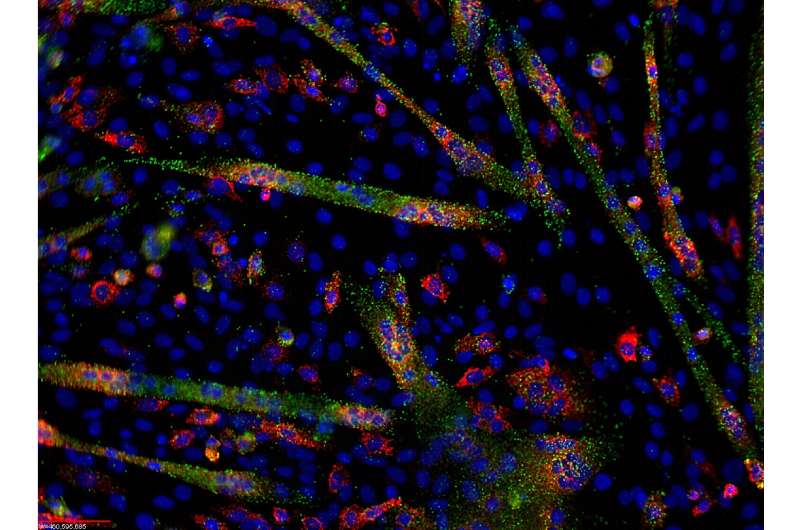MicroRNA exhibit unexpected function in driving cancer

Researchers long thought that only one strand of a double-stranded microRNA can silence genes. Though recent evidence has challenged that dogma, it's unclear what the other strand does, and how the two may be involved in cancer. New research from Thomas Jefferson University has revealed that both strands of some microRNA coordinate to act on the same cancer pathways, across multiple cancers, to drive aggressiveness and growth—two hallmarks of poor prognosis for cancer patients.
"This coordination of activity is really surprising," says senior author Christine M. Eischen, Ph.D., professor and Vice Chair of the department of Cancer Biology at Jefferson and co-leader of the Molecular Biology and Genetics program at the Sidney Kimmel Cancer Center (SKCC) - Jefferson Health. "We know that the strands don't hit the same target sequences. But despite that fact, we see that they are working together."
Researchers have not paid much attention to the both sides of microRNA, in part because reagents created to probe microRNAs were aimed at only one strand, "so as a field, we weren't looking at the whole picture," says Dr. Eischen.
The work was published in Nature Communications, February 20th, 2020.
First author Ramkrishna Mitra, Ph.D., a Research Instructor in Dr. Eischen's lab, started by using a computational approach that allowed him to search for both strands of the microRNA. "Our data showed that one strand of many of the pairs were not degraded as previously thought. We saw large numbers of both pairs in many cancers," says Dr. Mitra.
Looking at data from 5200 cancer patient samples from 14 cancer types, the researchers found 26 microRNA pairs that both appeared either more active and abundant or less active and abundant across multiple cancers.
"We then narrowed our search for the biggest effects," says Eischen. Dr. Mitra developed a new computational biology approach, in part, through the analysis of the genes essential for cancer cell survival and growth across 290 cancer cell lines to identify the pathways both microRNA pairs impacted across multiple cancer types. The researchers also determined which microRNA pairs had a bigger impact on driving or suppressing cancer growth together than either strand alone.
They found two pairs, named miR-30a and miR-145 that fit the bill. "Each pair has different target genes, but the targets hit the same cancer pathways," says Dr. Eischen. "These microRNAs help keep cancers in check—as seen both in patient data and in tumor cell lines. As a result, many cancers, such as kidney, lung, breast, become more aggressive when they lose these microRNAs and this impacts patient survival."
To validate the findings of their computational work, the researchers replicated what they found using an experimental approach. They forced expression of miR-145 and miR-30a in lung cancer cell lines, which reduced the cancer's aggressive traits, specifically its growth and migration.
"The SKCC has a longstanding history of discovery related to small RNA function in cancer, and Dr. Eischen's breakthroughs have significant potential for understanding both tumor development and tumor progression," says Karen Knudsen, Ph.D., Executive Vice President of Oncology Services at Jefferson Health, and the Enterprise Director of the Sidney Kimmel Cancer Center—Jefferson Health, one of only 71 NCI-designated cancer centers in the US.
More information: Ramkrishna Mitra et al, Pan-cancer analysis reveals cooperativity of both strands of microRNA that regulate tumorigenesis and patient survival, Nature Communications (2020). DOI: 10.1038/s41467-020-14713-2





















